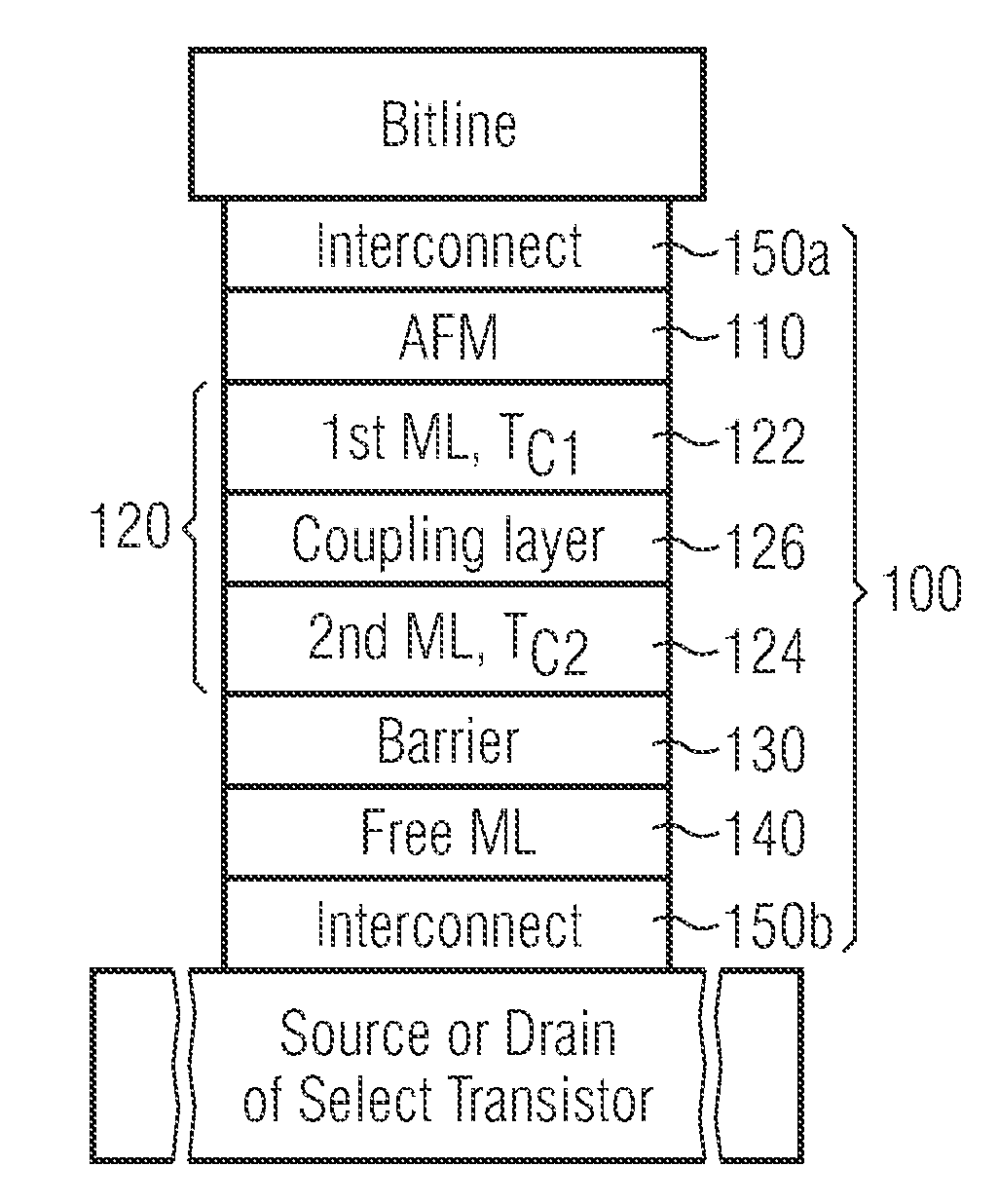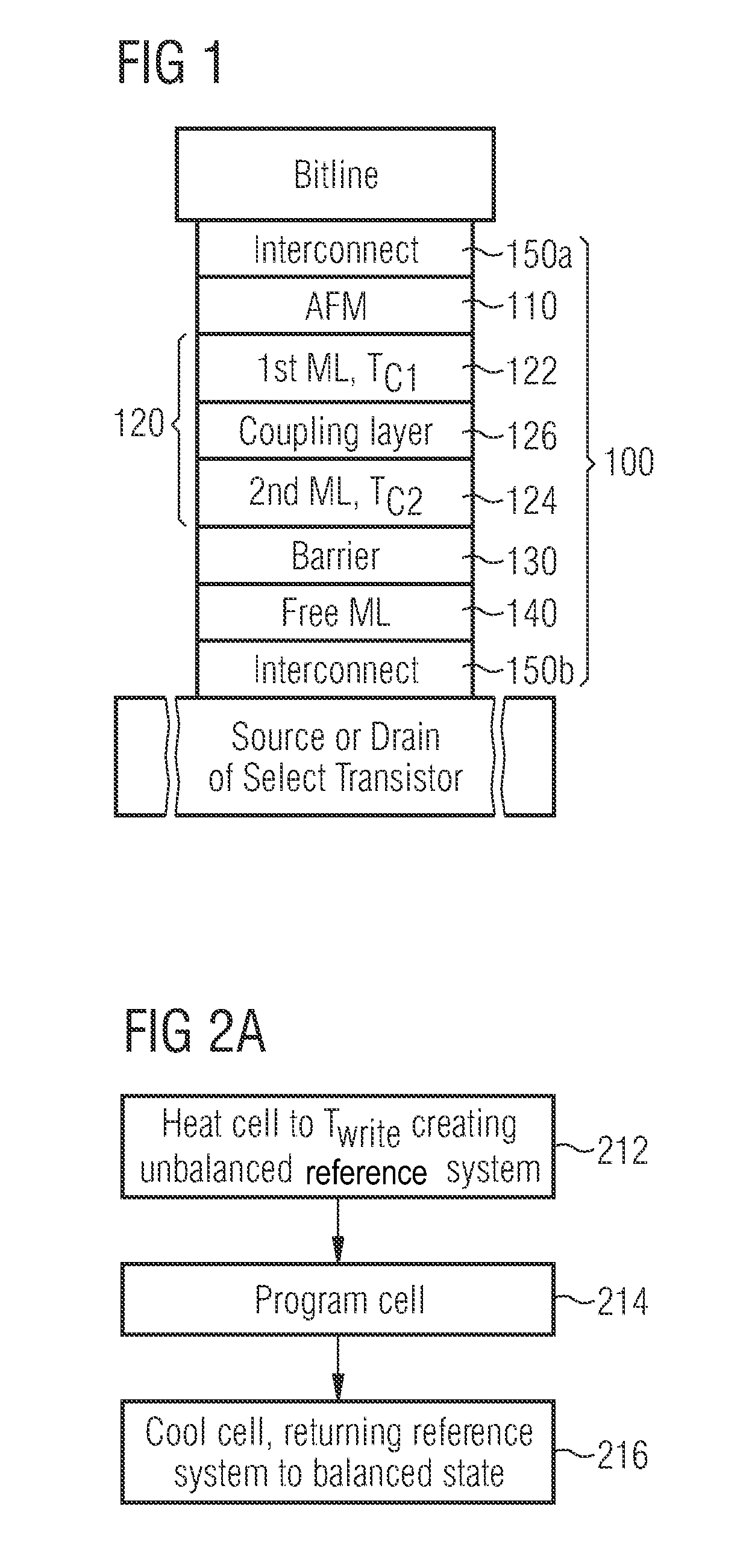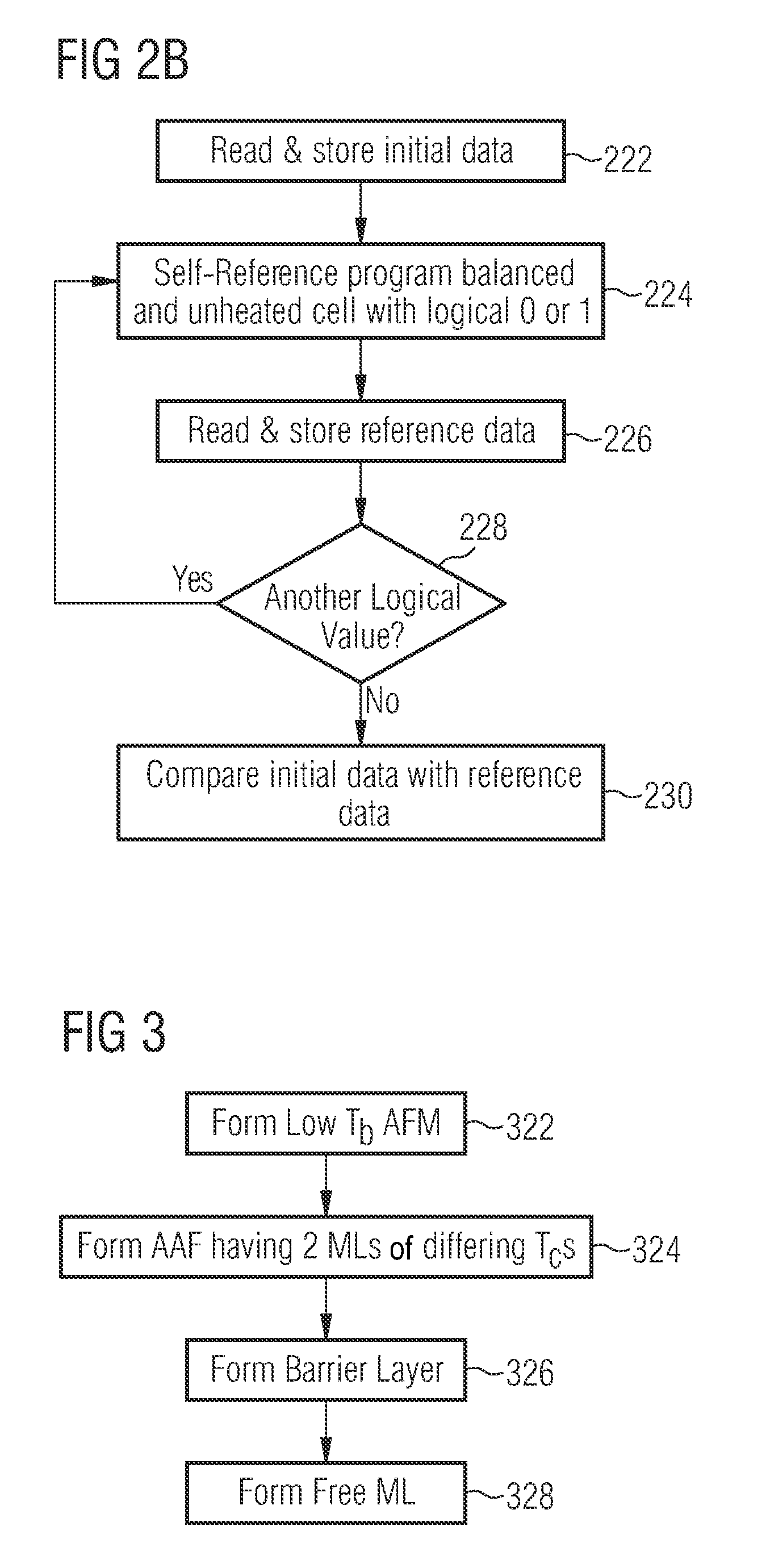MRAM Device Structure Employing Thermally-Assisted Write Operations and Thermally-Unassisted Self-Referencing Operations
a technology of mram and write operations, applied in the field of thermally-assisted mram cells, can solve the problems of aforementioned thermally-assisted writing process being negatively impacted, and the difficulty of thermally-assisted self-referencing presented
- Summary
- Abstract
- Description
- Claims
- Application Information
AI Technical Summary
Problems solved by technology
Method used
Image
Examples
Embodiment Construction
[0013]Various embodiments of the present invention provide a thermally-assisted MRAM structure that enables device self-reference without thermal heating. Thermal-assisted writing permits lower writing current, and accordingly, implementation of smaller current handling transistors and higher density MRAM memory devices and arrays. A greater degree of thermal insulation can be provided to the MRAM structure, since thermal heating is not required during self-referencing. Greater MRAM thermal insulation may permit the MRAM device to heat more quickly and efficiently during thermally-assisted write operations, thereby increasing programming speed and reducing power consumption.
Exemplary MRAM Device Structure
[0014]FIG. 1 illustrates an exemplary embodiment of a MRAM device structure in accordance with the present invention. As shown, the MRAM structure 100 includes an anti-ferromagnet 110 (AFM), an artificial anti-ferromagnet 120 (AAF) magnetically coupled to the anti-ferromagnet 110, a...
PUM
 Login to View More
Login to View More Abstract
Description
Claims
Application Information
 Login to View More
Login to View More - R&D
- Intellectual Property
- Life Sciences
- Materials
- Tech Scout
- Unparalleled Data Quality
- Higher Quality Content
- 60% Fewer Hallucinations
Browse by: Latest US Patents, China's latest patents, Technical Efficacy Thesaurus, Application Domain, Technology Topic, Popular Technical Reports.
© 2025 PatSnap. All rights reserved.Legal|Privacy policy|Modern Slavery Act Transparency Statement|Sitemap|About US| Contact US: help@patsnap.com



